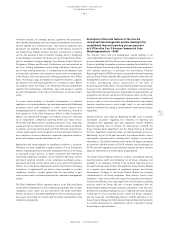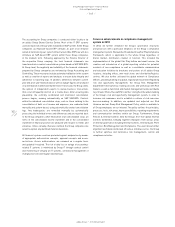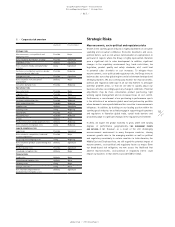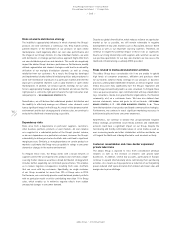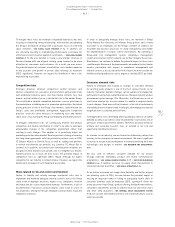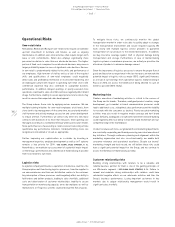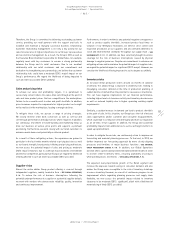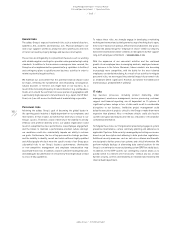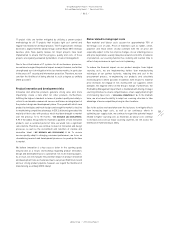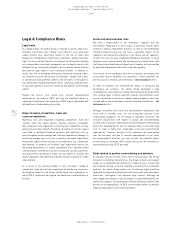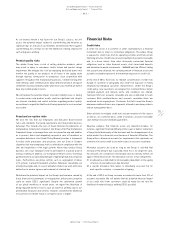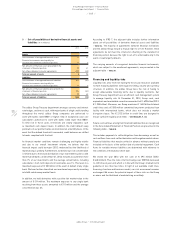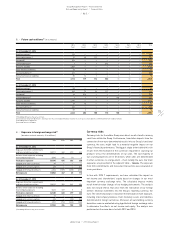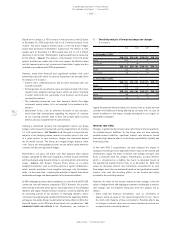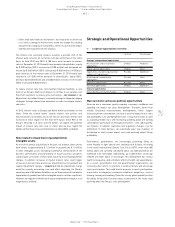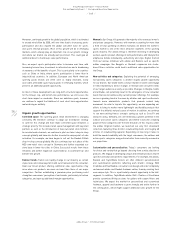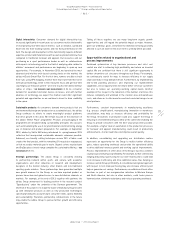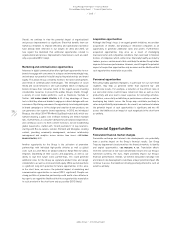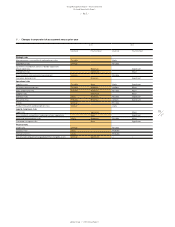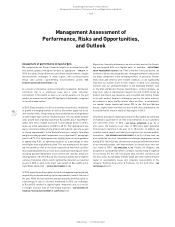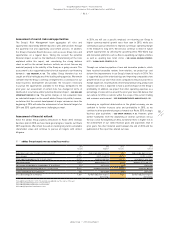Reebok 2013 Annual Report Download - page 175
Download and view the complete annual report
Please find page 175 of the 2013 Reebok annual report below. You can navigate through the pages in the report by either clicking on the pages listed below, or by using the keyword search tool below to find specific information within the annual report.
adidas Group
/
2013 Annual Report
Group Management Report – Financial Review
171
2013
/
03.5
/
Risk and Opportunity Report
/
Financial Risks
As our brands remain a key factor for our Group’s success, we still
assess the potential impact related to counterfeiting and imitation as
significant but, as a result of our relentless and intensive efforts against
counterfeiting, we continue to rate the likelihood of being impacted to
such a degree as unlikely.
Product quality risks
The adidas Group faces a risk of selling defective products, which
may result in injury to consumers and/or brand and product image
impairment. We mitigate this risk by employing dedicated teams that
monitor the quality of our products on all levels of the supply chain
through rigorous testing prior to production, close cooperation with
suppliers throughout the manufacturing process, random testing after
retail delivery, open communication about defective products and quick
settlement of product liability claims when necessary. In 2013, we did not
have any notable product recalls.
We still believe the potential impact of product liability cases or having
to conduct wide-scale product recalls could be significant and, despite
our internal standards and control activities regarding product quality,
we continue to regard the likelihood of being impacted to such an extent
as possible.
Fraud and corruption risks
We face the risk that our employees and Executive Board breach
rules and standards that guide appropriate and responsible business
behaviour. This includes the risks of fraud, financial misstatements or
manipulation, bribery and corruption. Our Group’s Fair Play Compliance
Framework helps us manage these risks in a proactive way and enables
us to prevent, detect and adequately respond in case of fraudulent or
corruptive behaviour. Our Global Policy Manual provides a framework
for basic work procedures and processes and our Code of Conduct
stipulates that every employee shall act ethically in compliance with the
laws and regulations of the legal systems where they conduct Group
business. All of our employees have to participate in a special Code of
Conduct training. In addition, our Compliance Officers across the Group
guide and advise our operating managers regarding fraud and corruption
topics. Furthermore, we utilise controls such as segregation of duties
in IT systems to prevent fraudulent activities. Whenever reasonable, we
actively investigate and, in case of unlawful conduct, we work with state
authorities to ensure rigorous enforcement of criminal law.
We believe the potential impact on the Group’s performance caused by
fraud, financial misstatements or manipulation, bribery and corruption
could be major (2012: significant). Despite the substantial growth
of our global workforce in recent years, we regard the likelihood of
being impacted by these risks to such an extent as unlikely, due to our
preventative measures and controls. However, we believe the likelihood
of occurrence of smaller fraud or corruption cases is higher.
Financial Risks
Credit risks
A credit risk arises if a customer or other counterparty to a financial
instrument fails to meet its contractual obligations. The adidas Group
is exposed to credit risks from its operating activities and from certain
financing activities. Credit risks arise principally from accounts receivable
and, to a lesser extent, from other third-party contractual financial
obligations such as other financial assets, short-term bank deposits
and derivative financial instruments
/
SEE NOTE 28, P. 222. Without taking
into account any collateral, the carrying amount of financial assets and
accounts receivable represents the maximum exposure to credit risk.
At the end of 2013, there was no relevant concentration of credit risk
by type of customer or geography. Our credit risk exposure is mainly
influenced by individual customer characteristics. Under the Group’s
credit policy, new customers are analysed for creditworthiness before
standard payment and delivery terms and conditions are offered.
Tolerance limits for accounts receivable are also established for each
customer. Both creditworthiness and accounts receivable limits are
monitored on an ongoing basis. Customers that fail to meet the Group’s
minimum creditworthiness are, in general, allowed to purchase products
only on a prepayment basis.
Other activities to mitigate credit risks include retention of title clauses
as well as, on a selective basis, credit insurances, accounts receivable
sales without recourse and bank guarantees.
Objective evidence that financial assets are impaired includes, for
instance, significant financial difficulty of the issuer or debtor, indications
of the potential bankruptcy of the borrower and the disappearance of an
active market for a financial asset because of financial difficulties. The
Group utilises allowance accounts for impairments that represent our
estimate of incurred credit losses with respect to accounts receivable.
Allowance accounts are used as long as the Group is satisfied that
recovery of the amount due is possible. Once this is no longer the case,
the amounts are considered irrecoverable and are directly written off
against the financial asset. The allowance consists of two components:
(1) an allowance established for all receivables dependent on the ageing
structure of receivables past due date and
(2) a specific allowance that relates to individually assessed risk for
each specific customer – irrespective of ageing.
At the end of 2013, no Group customer accounted for more than 10% of
accounts receivable. We still believe that the potential financial impact
of our credit risks from customers could be major but we rate the
likelihood of materialising as unlikely (2012: possible).


